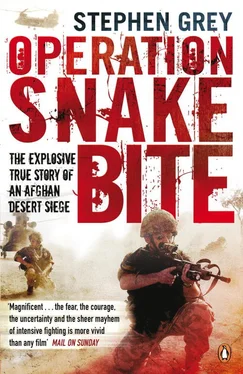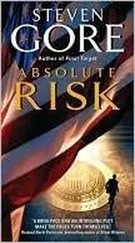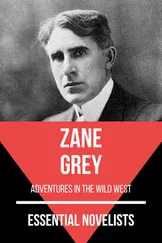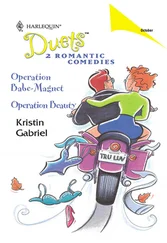And there was also the sobering reminder that much of the rebuilding work was work to repair things that NATO bombs had destroyed.
* * *
On 9 April 2008 Andrew Mackay handed over command of Task Force Helmand to a new brigadier, Mark Carleton-Smith, and his 16 Air Assault Brigade, the same airborne force that had first come to Helmand in the summer of 2006. This time, they had more than three times the strength and the new commander appeared to share Mackay’s philosophy of avoiding needless combat. But the summer tour was hard. In the six months that followed a total of twenty-nine people were killed.
On the civilian side, fresh hope came with the appointment by Karzai of a new Helmand governor, Gulab Mangal, whom the British regarded as modern and competent. Efforts to boost development and improve government competence were strengthened by a greatly expanded Provincial Reconstruction Team in Lashkar Gah.
On the military front, the brigade was boosted by a battalion of US Marines, who, posted down to Garmsir, pushed the front line a few miles south, at last securing the town for the Afghan government. The operation had taken place at short notice. Foreign Office officials were aghast that the planning for what happened afterwards was nothing like it had been for taking Musa Qala. But a plan for ‘stabilization’ was soon taking shape.
The most concrete achievement of the summer was an operation involving 5,000 troops which finally delivered a 200-ton hydroelectric turbine for the dam at Kajaki, enough when working to supply 1.8 million homes. If the Kajaki dam could be finally repaired and electricity supplies improved then something positive for NATO’s presence could finally be measured. But, as always in Helmand, success was not straightforward since electricity could only leave Kajaki if the Taliban chose not to destroy the power pylons. The Texan contractor in charge of the project, a chain-smoking Vietnam veteran known as ‘Kajaki George’, explained the Taliban charged people for using the power. He told Reuters news agency, ‘They make money from the dam, they charge for the power… When there’s more power, they could make more money.’
* * *
Interviewed in June, Carleton-Smith spoke of the continuing ‘precise, surgical’ strikes that had killed scores of insurgent leaders. Calling them ‘target decapitation operations’, the brigadier claimed they left the Taliban ‘much weaker’. ‘The tide is clearly ebbing not flowing for them. Their chain of command is disrupted, and they are short of weapons and ammunition.’ Divisions were opening up among them. ‘I can therefore judge the Taliban insurgency a failure at the moment,’ he was quoted as saying. ‘We have reached the tipping point.’ [22] Thomas Harding, ‘Afghan Insurgents “on Brink of Defeat”’, Daily Telegraph , 2 June 2008.
Qais, the Al Jazeera journalist, got a call from the brother of the Taliban commander Mullah Sadiq soon after that interview. ‘Your friend is no more!’ The line went dead. Other family phoned to tell him as well. And that was the end of his story. He heard that they had moved Sadiq’s wife and children away from Sangin to a place of safety.
On 29 June, the Ministry of Defence in London issued a statement announcing that a Taliban leader they called Sadiqullah had been killed by a Hellfire from a British helicopter the previous week. He was said to be the mastermind behind many roadside bombs and suicide attacks.
Lieutenant Colonel Robin Matthews, a British military spokesman, said, ‘This was a deliberate and surgical strike against a man who facilitated a number of fatal attacks on British, NATO and Afghan forces and civilians. It strikes a blow at the heart of the Taliban leadership.
Qais, however, was truly upset. ‘You know I always believed that he was one of those guys who could have been brought over to the government side. When I first met him I couldn’t imagine him killing anyone. But he did get more brutal as time when on and he got more success. Still, he was no extremist. The way he saw it, he was fighting for his country.’
While in Helmand there were some grounds for hope, the signs were that across Afghanistan the Taliban were broadly gaining in strength. They were creeping into provinces where they had rarely been seen before and returning to towns and villages that NATO troops had previously ‘cleared’. Roads were becoming desperately insecure for ordinary Afghans with the constant threat of banditry, rebel roadblocks or intimidation by corrupt policemen.
So many Taliban leaders had been captured or killed by special forces raids or air strikes, yet it seemed to do nothing to stem revolt. It was as if rebellion was spreading, not from an organized leadership, but from the smouldering embers of discontent with Karzai’s government.
Many chose to look across the Pakistan border for the centre of blame. It was true that the country’s north-west frontier was becoming wilder than ever, and elements of Pakistan’s intelligence service continued to provide succour to attacks in Afghanistan. The Pakistan Taliban were going from strength to strength, threatening the city of Peshawar and providing new bases for training and supplying their Afghan brethren. President Bush, in his last six months of office, authorized raids by US special forces across the border against these camps. Reports in the press suggested that British special forces were conducting covert missions there too. Pakistan vowed to defend itself. There were more reports of civilian casualties. Rather than lead to decisive action to neutralize the Taliban, the raids risked simply widening the war and further inflaming Muslim opinion across the world.
For many of the soldiers who fought in Afghanistan on the winter tour of 2007 and 2008, their return was but a brief respite before preparing for a new deployment.
The 2 Yorks (Green Howards) Battalion returned to their base at Weeton near Preston. Most of B Company were soon training again for a potential deployment in the winter of 2009. Many of their officers were moving on, though. Jake Little left B Company after completing his two years of command and went on to the directing staff of the army college at Shrivenham. He was awarded a Military Cross (MC) for his ‘decisive, bold and skilful leadership’ and gallantry. His second-in-command, Nick Mantell, decided to leave the army. He was not sure he wanted to do the same all over again.
Captain Andy Breach stayed on with the 2 Yorks, as commander of recce platoon. Jimmy Lynas stayed with B Company as a platoon sergeant. Both Lynas and his late friend Jonno got a ‘mention in dispatches’ gallantry award. Jonno’s was for motivating the troops in the village outside Musa Qala. His citation read: ‘Johnson, in an exemplary display of courage, drive, and leadership, energized an ANA company that had lost the will to fight and, notwithstanding the enemy threat or difficulties of language and culture, drove them forward.’ Lawrence Fong passed a junior leaders’ course that put him in line for promotion. Mike Scott, the sergeant-major in Sangin, was deployed to Iraq as a regimental sergeant-major attached to another unit. Dave McCarrick was working in the sergeants’ mess at the 2 Yorks headquarters in Weeton. Mark Syron moved to Brecon in Wales to be a sniper instructor.
Of others in the 2 Yorks, the commanding officer, Simon Downey, received an OBE and was promoted to full colonel and left for a new appointment. From C Company, Onur Caglar got a mention in dispatches for his lone actions on the day that Captain McDermid died.
Among the Royal Marines, of the four injured on the patrol to Khevalabad from Kajaki on 4 November, all were making a slow but steady recovery. Matt Kingston, who was shot in the ankle, eventually opted to have his leg amputated after his wound failed to heal. But he was hoping he could in future return to front-line duty with the aid of a prosthetic limb. The men’s troop commander, Captain Sim Jemmett, was himself seriously injured after that patrol. An RPG blast left him with burns to his eyes and throat and shrapnel to the neck. When he woke up back in Britain, he was all but completely blind. His sight has since recovered well, but he cannot drive or shoot. He was given a job as aide-de-camp to the Marines’ commandant general. Also injured by the same blast were Corporal Jon Kersey and Marine Lee Stewart, both of whom have returned to duty. The Kajaki commander, Duncan Manning, received a mention in dispatches, as did Company Sergeant-Major David Layton for his quad-bike rescue on the Khevalabad patrol.
Читать дальше












